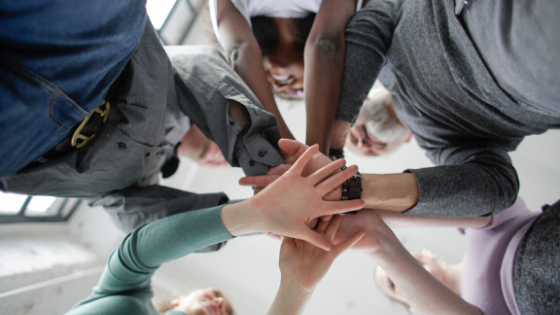How Food Brings People Together
go.ncsu.edu/readext?698881
en Español / em Português
El inglés es el idioma de control de esta página. En la medida en que haya algún conflicto entre la traducción al inglés y la traducción, el inglés prevalece.
Al hacer clic en el enlace de traducción se activa un servicio de traducción gratuito para convertir la página al español. Al igual que con cualquier traducción por Internet, la conversión no es sensible al contexto y puede que no traduzca el texto en su significado original. NC State Extension no garantiza la exactitud del texto traducido. Por favor, tenga en cuenta que algunas aplicaciones y/o servicios pueden no funcionar como se espera cuando se traducen.
Português
Inglês é o idioma de controle desta página. Na medida que haja algum conflito entre o texto original em Inglês e a tradução, o Inglês prevalece.
Ao clicar no link de tradução, um serviço gratuito de tradução será ativado para converter a página para o Português. Como em qualquer tradução pela internet, a conversão não é sensivel ao contexto e pode não ocorrer a tradução para o significado orginal. O serviço de Extensão da Carolina do Norte (NC State Extension) não garante a exatidão do texto traduzido. Por favor, observe que algumas funções ou serviços podem não funcionar como esperado após a tradução.
English
English is the controlling language of this page. To the extent there is any conflict between the English text and the translation, English controls.
Clicking on the translation link activates a free translation service to convert the page to Spanish. As with any Internet translation, the conversion is not context-sensitive and may not translate the text to its original meaning. NC State Extension does not guarantee the accuracy of the translated text. Please note that some applications and/or services may not function as expected when translated.
Collapse ▲Written By Jada Yarbrough
When people hear “food,” they think of numerous meats, vegetables, and other things they can eat. Food is not only known as “what we can eat,” but also known as a way of survival. It is a representation of expression and cultures. There are hundreds of cultures across the worl d and no two cultures are the exact same. Many cultures are in or have come to the United States. Some of us are unable to travel to other countries and it is brought to us by our local restaurants so we can experience them.
d and no two cultures are the exact same. Many cultures are in or have come to the United States. Some of us are unable to travel to other countries and it is brought to us by our local restaurants so we can experience them.
Overall, food brings us together as a human race. It brings us together to fellowship, show love, learn, and eat good. Whether food is being cooked on a stove, grill, or even prepared at a restaurant or catered, it acts as the glue that momentarily holds people together to interact at gatherings, meetings, and even funerals. Majority of the time, there is more than one race, class, or ethnicity, eating at a restaurant. People of all races even support businesses that are owned by black families, Chinese families, white families, or Jamaican families.
When we eat food, we see no color. We get our food and eat it subconsciously because we simply like it or want “something good to eat.” I have heard many people say, “you know if food is there, people will be there.” Food is one of the things in this world that allows people to forget their differences. A black man may not like a white man, but they both are beside each other fixing plates at golden corral. A white man may not like Chinese people, but he still goes to a Chinese restaurant because he likes sesame chicken. Food links us together. We do not see race, class, or ethnicity.
About Jada Yarbrough
Hello! My name is Jada Yarbrough. I am from Roxboro, North Carolina. I am a social work student at North Carolina A&T State University. I am a rising senior and will be graduating in the spring of 2021.




